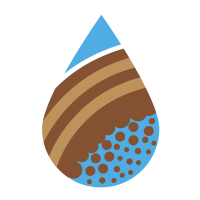|
Introduction |
Helping to improve our understanding of Scotland’s precious soil resourceHelp us learn more about soil erosion by telling us where you see it, what you think caused it, and where the eroded soil is now What will we do with the data?
Soil Erosion – what is it & where is it happening?Soil erosion is a natural process where soil particles are broken off from the soil surface and are moved across the land. In Scotland, it is usually caused by water flowing over the land or by the wind. Soil erosion occurs across the country, in natural as well as cultivated land, in the uplands and the lowlands. We have provided photos of existing examples at various types of erosion at this page.Why should we care?The most obvious effect of soil erosion is the loss of soil from fields. You may have seen soil washed out of fields and onto roads. This is not just bad for farming; the eroded soil can be washed into rivers and burns where it can pollute the water as well as smother the river beds and damage breeding grounds for fish. Soil eroded from the uplands can result in peat hags – any hill walker will know that these are difficult to walk across! Erosion of peat soils can again cause water pollution and can also damage our climate by releasing carbon dioxide into the air.You can help!You can help us understand and monitor soil erosion by sending us your records using this website whenever you see evidence of soil erosion. Collecting this information is the first critical step to being able to tackle the problem.Any personal details submitted using these pages will be kept strictly private and are used solely to validate the information submitted. No information submitted as name, email address or affiliated institution will be made accessible on this site or shared with any party without your explicit permission. There is no requirement to register to submit records. However, as we develop the system there will be opportunities to become involved in specific projects for which you will need to register to gain specialist access. This project is funded by the Scottish Government RESAS Strategic Research Programme 2016-21. |

